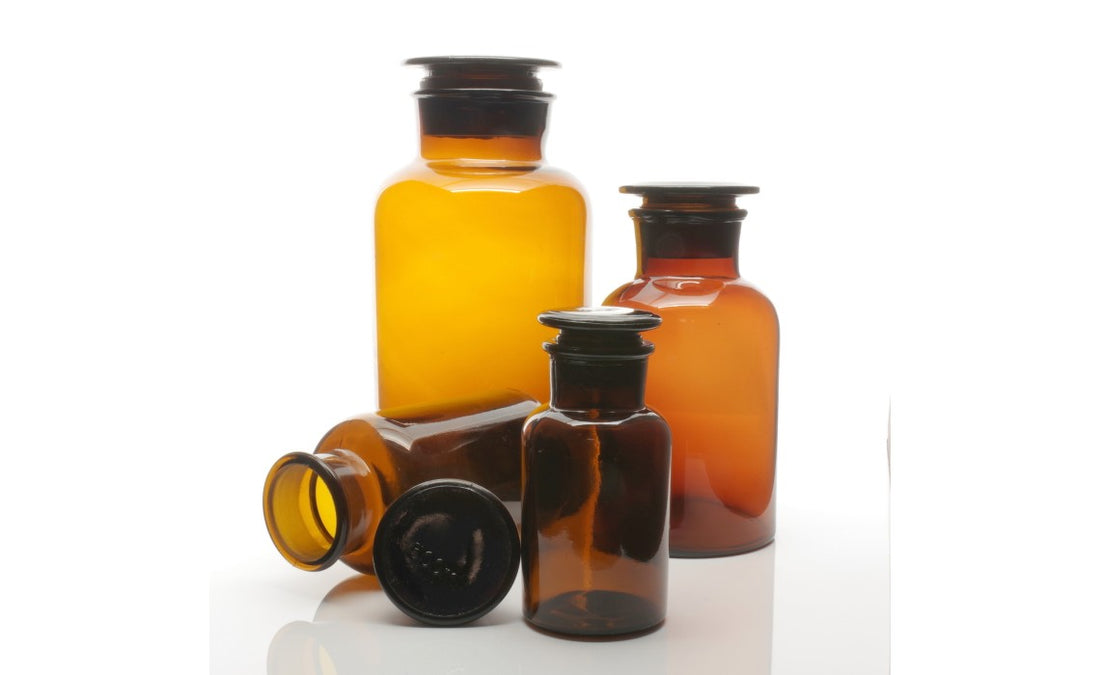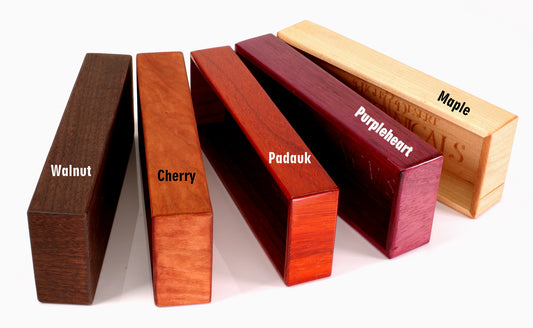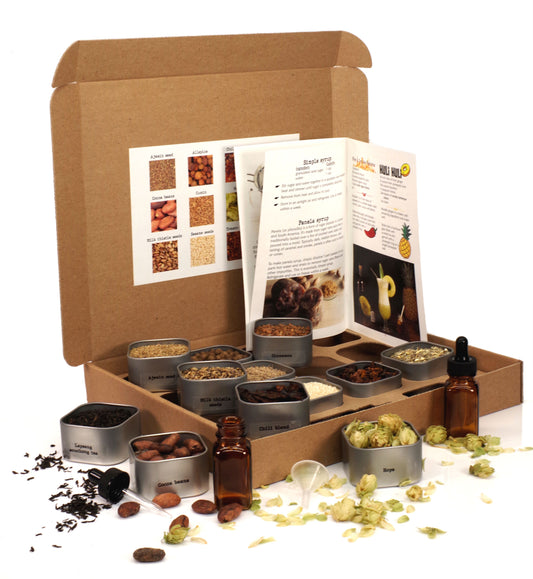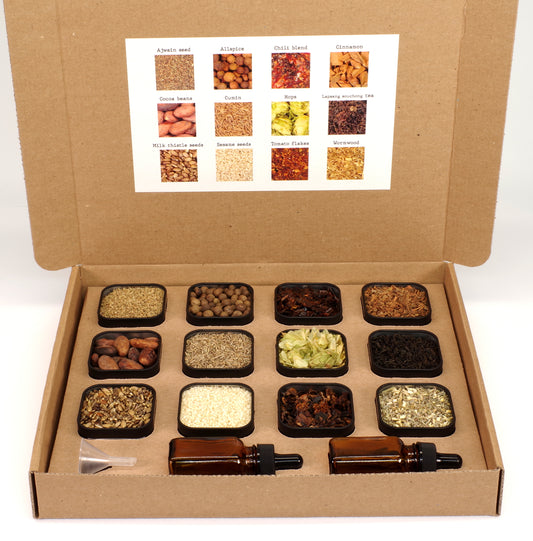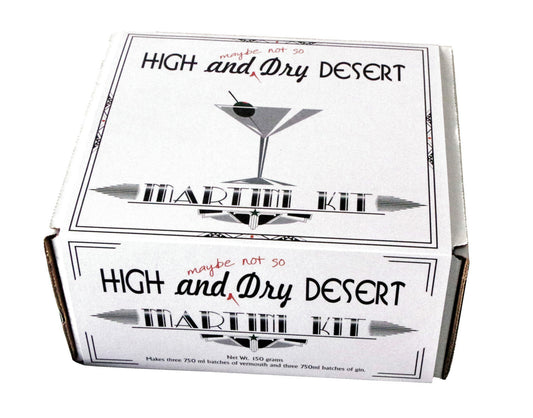General use, care, and how to open a stuck stopper.
Many of our kits include reagent bottles for steeping and storing bitters. This type of bottle has been used to store chemicals for at least 150 years, though the idea for the ground glass stopper dates back to the late 1700s. The combination of glass bottle and stopper makes the container very resistant to chemical corrosion with a few exceptions. Very strong alkali should not be stored in these bottles because the alkali can cause the stopper to corrode and fuse to the neck of the bottle. Also, hydrofluoric acid should never be stored in glass containers because it will actually dissolve the glass.
Reagent bottles that have been used in a laboratory or otherwise used to store chemicals should not be used for storing food or drinks. Brand new bottles may contain a white residue from the process of grinding the neck and stopper so they should always be washed before use.
Bottles typically come in two colors: clear and amber. Clear bottles are ideal for displaying items and amber bottles protect the contents from light. Sizes range from 30 ml (1 ounce) up to 20000 ml (about 5 gallons) and the larger ones may be used to store preserved biological specimens in the lab. The large ones also make excellent terrariums or miniature aquariums.
Because glass expands and contracts with changes in temperature, care must be taken when reagent bottles are heated and cooled. When a reagent bottle is heated, the neck expands, allowing the tapered stopper to drop farther into the bottle. When the bottle is then cooled, the neck shrinks around the stopper, locking it in place. The rough surface of the neck and stopper prevents the stopper from sliding up as the neck shrinks. With a large enough change in temperature, the neck of the bottle can actually crack if it shrinks too tight around the stopper. Additionally, if hot liquid is poured into the bottle, the liquid will form an air-tight seal between the stopper and bottle, and as the liquid and steam in the bottle cool and shrink, the stopper will be pulled down into the bottle neck. This is the same principle that makes the center of a canning jar lid pop down until the seal is released.
When pouring hot liquids into a reagent bottle or placing the bottle in the refrigerator, the lid should be propped open with a toothpick or other small object until the liquid and bottle are cool. Another way to seal the bottle while preventing the lid from sticking is to place a sheet of plastic wrap loosely over the bottle neck before pushing the stopper down.
If the lid of your bottle does get stuck, there are ways to rescue it without breaking it. (You may want to wear leather gloves while trying to remove a stuck stopper in case the bottle or stopper breaks.) Stuck stoppers often cause small chips around the mouth of the bottle. Use a small piece of fine grit wet sandpaper to smooth the edges of the chips.
- Grasp the bottle in both hands with your fingers around the bottle and your thumbs against the edge of the stopper. Push against the edge of the stopper. Rotate the bottle and try again until you feel a small pop. It may take several rotations and "pops" before the lid is loose enough to remove.
- If the first step didn't work, try running the bottle under warm water while keeping the lid dry. The greater the temperature difference between the bottle and stopper, the more likely the stopper will come loose. Once the bottle is warm, dry it and repeat the steps above.
- If that still doesn't work, place a slightly crumpled piece of foil on a rack in the middle of an oven. The foil should be about 1.5 times the height of the bottle or larger. Lay the bottle on its side on the foil with enough extra foil under the top of the bottle to keep the lid from hitting the oven rack if it falls out. Heat the bottle gently by starting at 250°. Increase the temperature by 10-20° every 15 minutes until the stopper loosens. You can pull the bottle out and try step one wearing heat-resistant gloves but the lid should eventually get loose enough to fall out on its own.
- If all of that fails, let the bottle slowly cool to room temperature. Wearing a heat-resistant glove and safety glasses, hold the bottle upside down over a folded towel, and use a torch or heat gun to heat the neck of the bottle. The lid should eventually fall out onto the towel. This rapid heating can cause the bottle to crack so use caution.
- If none of those things work and you absolutely must get the contents out of the bottle, use a chisel and hammer to gently chip away the neck of the bottle around the stopper. If the contents you are rescuing are your bitters, filter them thoroughly to remove any glass slivers.

